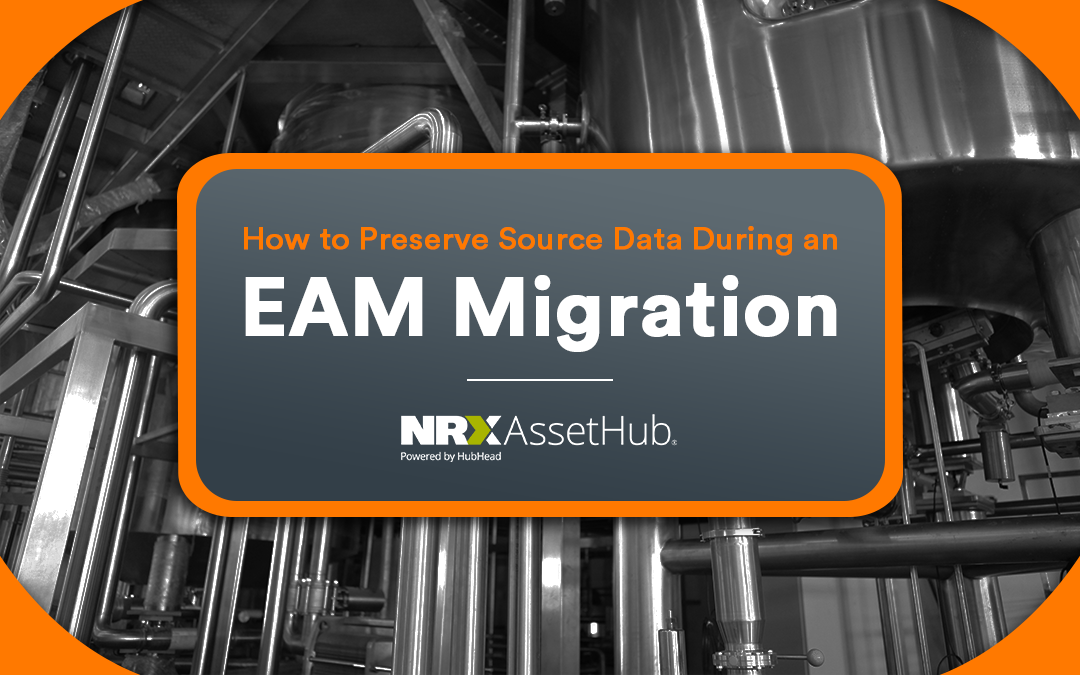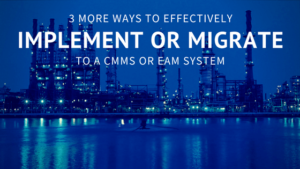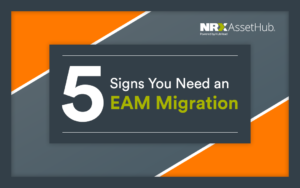Asset and maintenance data are the foundation of nearly every asset-intensive business out there. It serves as crucial information regarding a company’s asset maintenance and reliability, ultimately allowing for smarter business decisions to be made. Without a strong set of asset and maintenance data to reinforce these important decisions, companies will begin to travel down a road of inefficiency and waste. Time and money are invaluable to a company’s success and well-being, so an absence of strong, accurate asset data will surely lead to wasted resources and lost business opportunities. For these reasons, it’s important to ensure that when you’re looking to migrate to a new Enterprise Asset Management (EAM) system, your source maintenance and reliability data is of the utmost priority. Preserving it as best as possible should always be of concern, yet many companies fail to do so during the EAM migration process. To help, we’ve listed some general guidelines to follow which will help preserve your own source data during a Computerized Maintenance Management System (CMMS) migration.
The Steps to Preservation
Make it a separate project. Of course, your CMMS migration project will not entirely be based on the source data you’re transferring to your new EAM system. With the project requiring a tremendous amount of effort to begin with, why risk losing your quality asset and maintenance data bundling that piece as an add-on or afterthought to your main project? Assemble a team dedicated to this transfer of high-quality asset and maintenance data between systems and provide as much support as required to get the job done properly.
Ensure your asset and maintenance master source data is accurate. Transferring inaccurate asset and maintenance master data to your new EAM system is not only costly and inefficient, but it creates more work for your team to correct after the migration has been completed. Before starting the migration process, you need to make sure your existing asset and maintenance master data being migrated is correct. There are multiple ways to do this, whether it’d be through a thorough plant walkdown or conducting a master data cleanse beforehand. Every bit of asset and maintenance master data going into your new EAM or CMMS should be accurate and fit for purpose.
Format your asset and maintenance data as required for the migration, but not at the expense of losing useful information. Different EAMs always have different data structures for asset and maintenance master data. While it may be tempting to just discard any asset and maintenance master data that doesn’t fit neatly into your new EAM or CMMS solution, this will invariably result in a new EAM or CMMS that is less functional than what your maintenance and reliability team are used to. This is a complicated area where you should get help from asset and maintenance master data specialists with experience migrating between the different variants of EAMs that are out there. They can explain the optimal way to map, transform, and migrate asset and maintenance master data so that valuable information is not lost and the new EAM is optimized to function as intended after the migration.
Research different transfer methods. An EAM migration isn’t a one-man job. There’s a massive amount of time, effort, and strategy required in properly switching systems while simultaneously preserving your asset and maintenance data. Having a small team of employees transferring data using spreadsheets usually won’t cut it; inevitably information will be lost and mistakes will be made. Choose a migration solution that’s fit for purpose and built to migrate asset and maintenance master data.
Test your new EAM once the process is complete. Even if the entire migration process seemed to go smoothly, you must ensure that all of your asset and maintenance master data has been set up in your new system correctly so that it’s fit for purpose after the migration. If you don’t leave enough time in your project to test your new EAM , your employees will run into problems later on. Significant amounts of time will be wasted and downtime may occur.
We Can Help with the Process
It’s apparent that performing an EAM migration while simultaneously preserving your asset and maintenance master data can be quite the challenge. NRX AssetHub is the perfect solution for EAM migrations and our experienced service team can guide you successfully through the whole process. If you’re seeking assistance in migrating your asset and maintenance master data during an EAM migration, feel free to reach out and book a demo.
7 Effective Steps to Implementing & Migrating Your CMMS System
3 More Ways to Effectively Implement or Migrate to a CMMS or EAM System
5 Signs You Need an EAM Migration
Share this article




